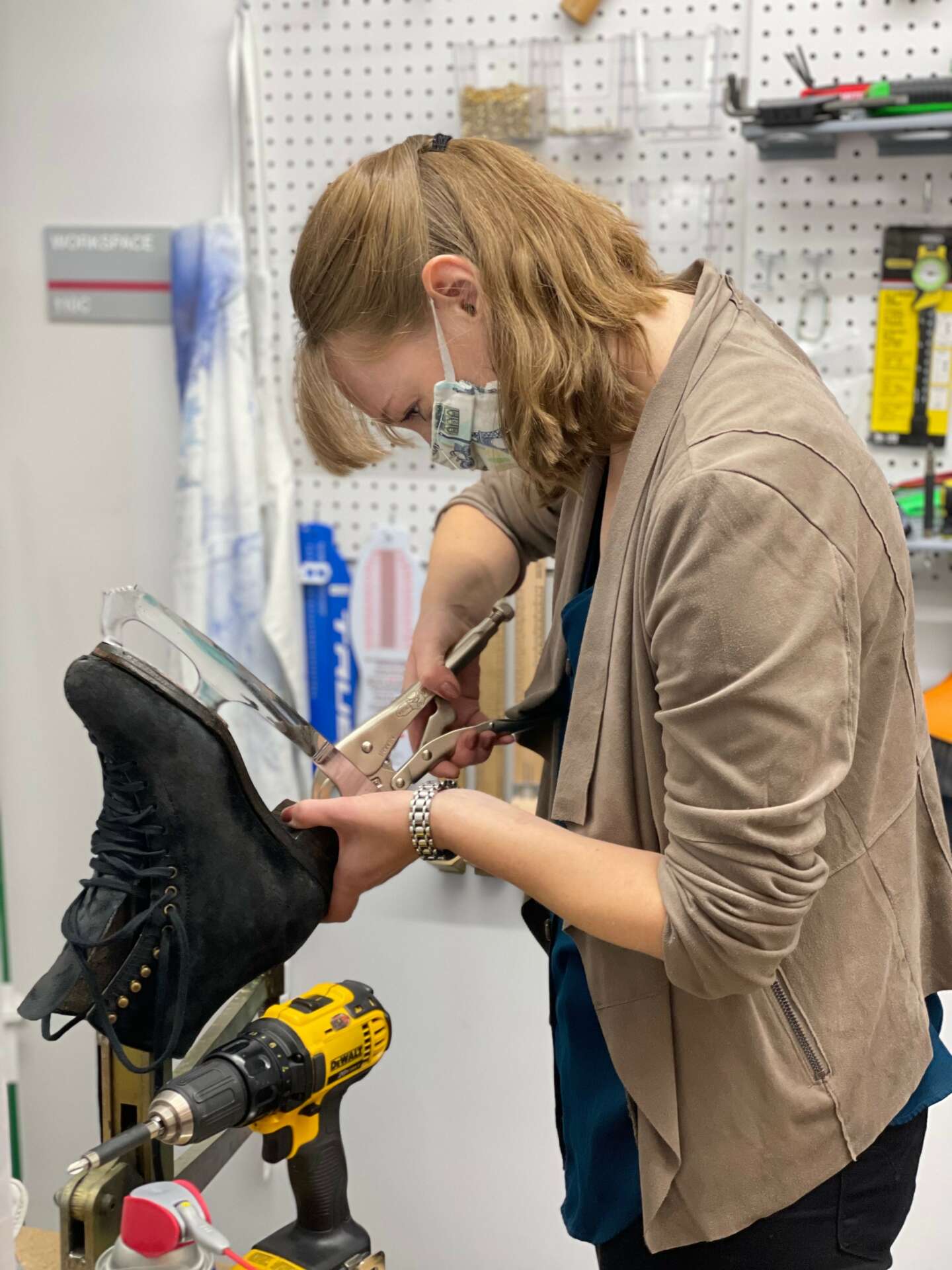We’re excited to introduce you to the always interesting and insightful Aislinn Munck-Owen. We hope you’ll enjoy our conversation with Aislinn below.
Hi Aislinn, thanks for joining us today. Let’s start with a fun one – what’s something you believe that most people in your industry (or in general) disagree with?
The customer is NOT always right.
To be clear, it’s always of the utmost importance to show respect and patience, even when you have to vehemently disagree with a customer on something, but in my line of work, it can be a matter of damaging your reputation.
Something that we try to educate all skaters and their parents on from the beginning of their skating journey is that skates are not merely shoes, they are specialized pieces of equipment and they need to fit accurately. I am 100% sympathetic to the fact that kids grow quickly and skates are expensive but so is physical therapy and trips to the ER because a skater hurts themselves in ill fitting equipment.
Early on when I first started the business, I was working with a young skater who’s mom insisted their child get skates that were two sizes too big. I knew that it was the incorrect thing to do, but I also grew up with the well known saying “the customer is always right” and I had bills to pay and debilitating credit card debt keeping me up at night. That was the only source of capital I could get at the time because I had no “business experience” to get a business loan…. of course you can’t get business experience if you can’t ever afford to start a business – fun little catch 22 there, but I digress…
I gave in to the parent’s demands. Even though I made the sale that day, it cost me long term. The coach that was working with that skater immediately noticed the skates were too big and came to talk to me about why I sold them skates that were ill fitting. While the coach was empathetic to the situation, they told me that I need to learn to be more firm with skaters and their parents and that they didn’t feel like they could trust me with the other skaters they were working with because I didn’t trust my instincts and buckled under the pressure of a pushy parent. I was crushed at the time, but it was some of the best advice I’ve ever been given. Luckily, over the years I have been able to earn a better reputation with that coach but that interaction greatly shaped how I handled all future sales.
When you’re first starting a business, every little sale matters. It feels like you’re hustling and grinding to make every single dollar, but long term, not every sale is worth it, especially if you have to compromise your values or cause potential damage to your business reputation.


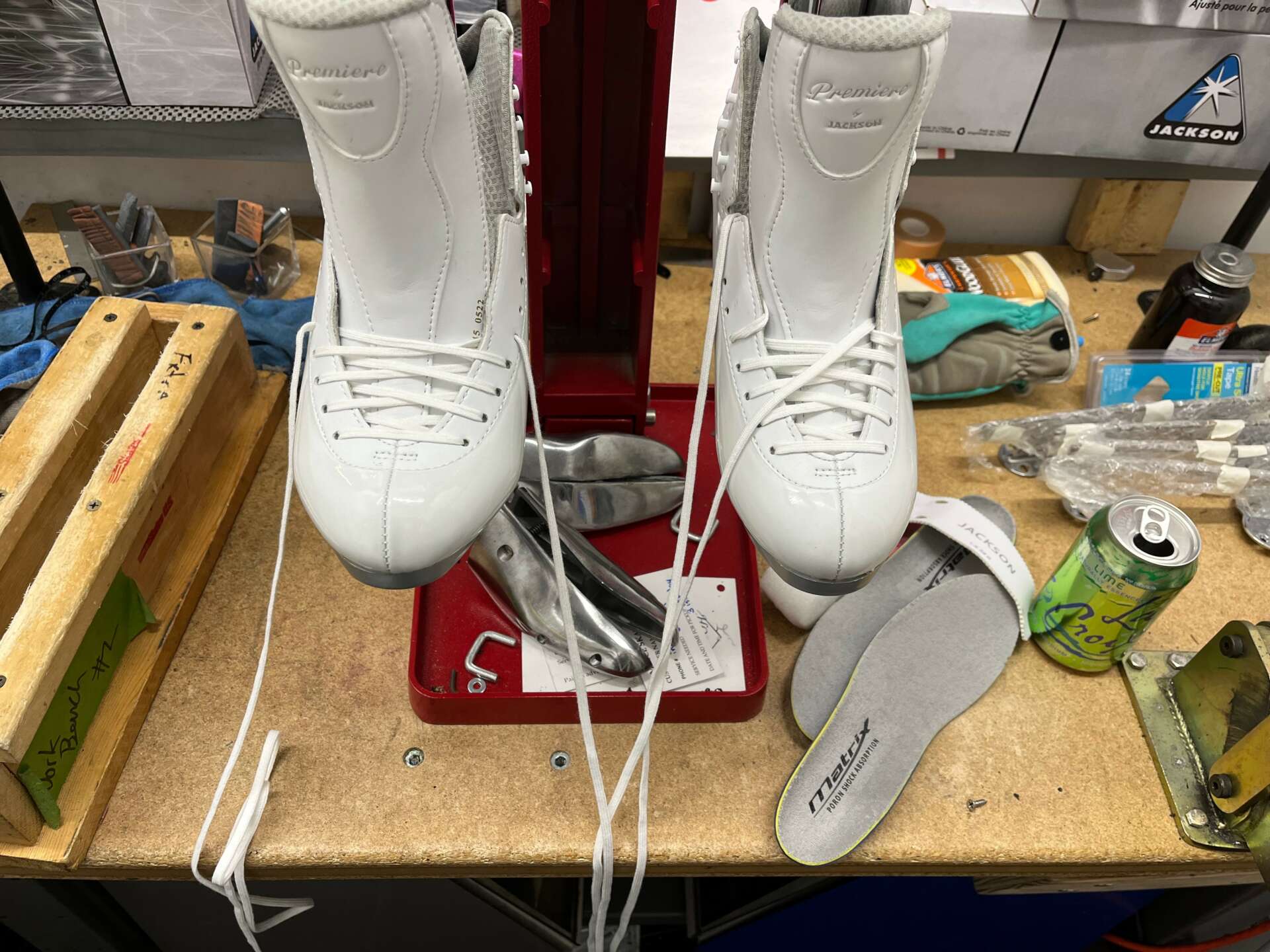
Awesome – so before we get into the rest of our questions, can you briefly introduce yourself to our readers.
For as long as I can remember, I have always loved being on the ice. I started around age five and truly, some of my earliest happiest memories are being so unbelievably cold (like my face hurt and I couldn’t feel my toes) but I didn’t care because I was so in love with gliding around on the ice. For most of my life I have had virtually no interest in any other sports or activities. If I had a good day and was happy, I wanted to skated, if it was a bad day, I wanted to skate. My cat was put down? take me to the rink! Parents getting divorced? Forget the family counselor, get me my ice skates! Experiencing the excruciating and life altering event of a high school break up? Mom, I’m not going to school – I clearly need to go skate!
I grew up in Helena, Montana (no, it’s nothing like the TV show, Yellowstone – don’t get me started) but it was a small town that’s ice rink was dominated by hockey, so there was no store that offered much for competitive figure skaters. In general, sales and maintenance of high level figure skates is a very niche market so it’s rarely found outside of big cities with prominent figure skating clubs. I loved skating and even though moving to a different city for more opportunities was not a financial reality for my family, I continued to go as far as I could in the sport acknowledging and accepting that there were obvious limitations with staying in my small town.
As time went on and I advanced to higher levels of skating, it was time to start buying more specialized equipment. My dad and I would call a company in Chicago (that’s right kids, called… on a land line – this was before online shopping!). We would get skates shipped to us and spend hours trying to heat mold them, mount them and walk through the various needed steps just using whatever tools we had in our garage. So my first involvement as a “skate tech” was very rustic and purely out of necessity. But I absolutely loved the process of getting the new boots in the mail and making them “mine” – they were like stiff shapeless white leather bricks, but after a few hours of heating, working them in and adjusting them, they would slowly start to take the shape of my feet. A good pair of figure skate boots should feel like an extension of your body, like a part of you. It takes a lot of work to get a new boot to feel that way but the process is so satisfying.
After graduating high school I was offered a contract to skate for Disney on Ice. This was a life-transforming opportunity to travel the world and work along side wonderful and talented skaters from different countries and upbringings. I skated for Disney for six years and would have continued for longer, had I not experienced a reoccurring injury in my right foot that more or less forced my retirement. Luckily the timing was very serendipitous. There was a job listing to manage a skate shop inside the Skating Club of Boston. Boston is a well known hub for figure skating and has produced multiple Olympians so naturally I leapt at the opportunity. I managed the shop for just under two years and eventually ended up buying out the inventory and assuming the lease and starting my own skate shop, now called Home Ice.
I’ve owned the business for nearly seven years now and have four wonderful part time staff members who are all skaters themselves. As a skate business run by skaters, we rely heavily on empathy and understanding. Interestingly enough, most skate shops aren’t owned or run by figure skaters. Most skate shops are more hockey centric. This makes sense when you consider how many hockey players there are for every one figure skater – naturally, there’s a lot more business interest in focusing on hockey. I’m very proud of being one of the only skate shops in the country that is 100% dedicated to figure skaters. While we do occasionally sharpen hockey skates, our sharpening machine is specialized equipment designed for figure blades and all of our inventory we sell is for figure skaters. Once in a while I get a disgruntled hockey customer that is angry that I don’t sell hockey products. With a smile I tell them that there are at least 10 other shops within driving distance that offer plenty of hockey skates and zero figure skating products so my store will happily remain a little figure skating oasis. Please note, I mean no disrespect towards hockey! I’d be remiss to not mention that my mom’s side of the family hails from the frigid lands of Grand Forks, North Dakota and eat/live/breath hockey. It’s a wonderful sport, it’s just not my passion.
A lot of time it seems like 10% of the work I do is routine maintenance and 90% of the work I do is problem solving. Skaters need to wear equipment that is incredibly tight, stiff and by nature, not very comfortable foot wear. What can I do as a skate tech to make their skates work for them? We have skaters with wide feet, narrow feet, high arches, no arches, extra bones, bunions, extra toes (yes, I once fitted a skater with an extra toe). There is such a wide array of feet and such a wide array of skaters with varying skill levels and skating goals. Competitive skaters never take a break, they’re training 3+ hours a day, 6 days a week all year round. Their feet get blisters, they bleed, they get bursitis the size of golf balls and it’s my job to make sure they don’t miss practice because they have issues with their equipment. It’s exhausting at times but I absolutely love it. There’s no greater rush than being able to find the solution to a problem that’s causing someone pain. Sometimes it’s for a team USA athlete who’s competing at a Grand Prix in Japan next week and sometimes it’s for a five year old who can’t articulate what’s hurting them, but you can see the pain in their eyes. Most of the time it requires heating up the boots to a certain temperature and shaping around different spots on the foot. Other times, it requires gluing or sewing padding into a different part of the skate. Sometimes the issue is the fit of the boot but the placement of the blade which requires aligning under the boot in a different position.
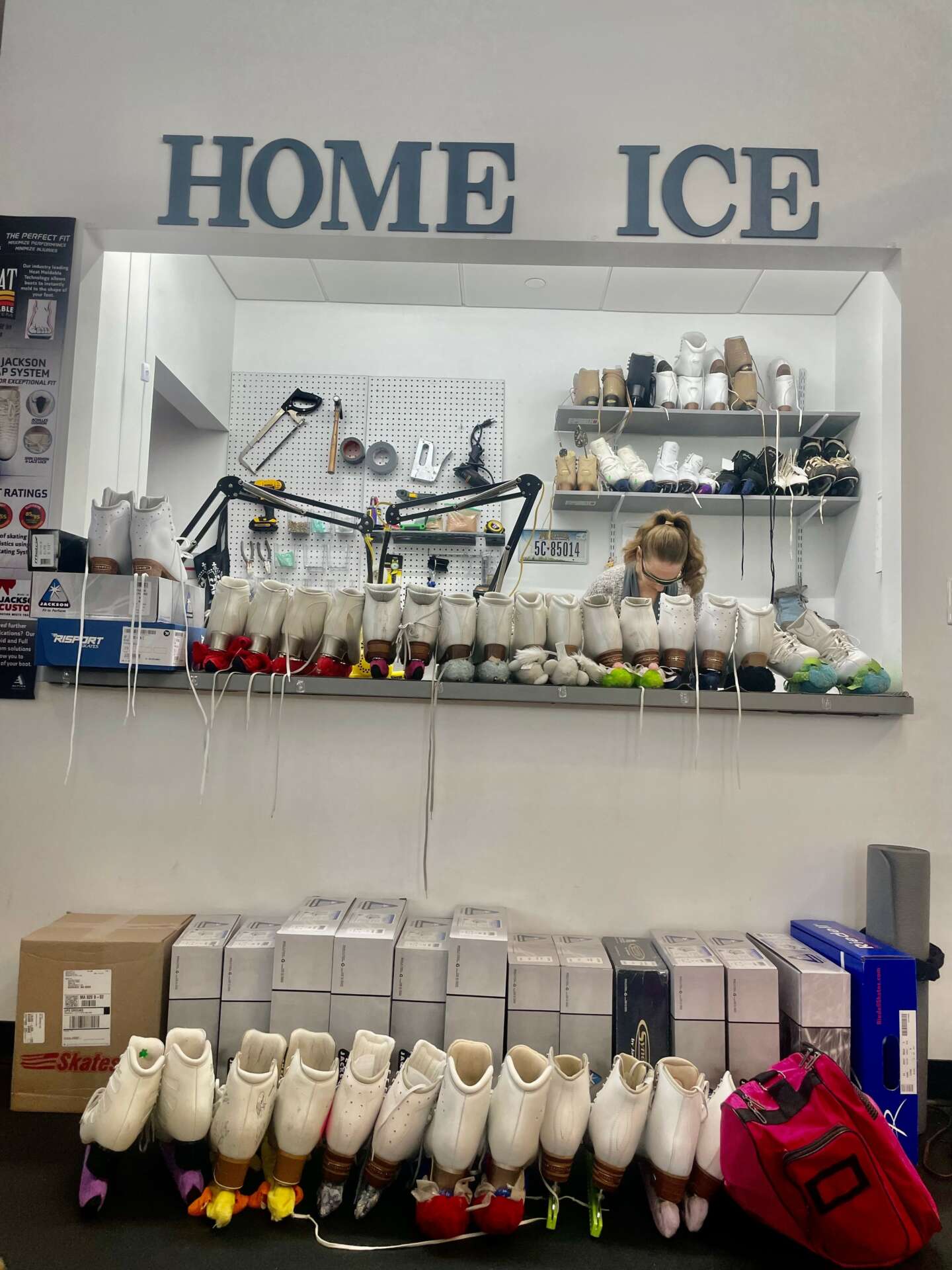
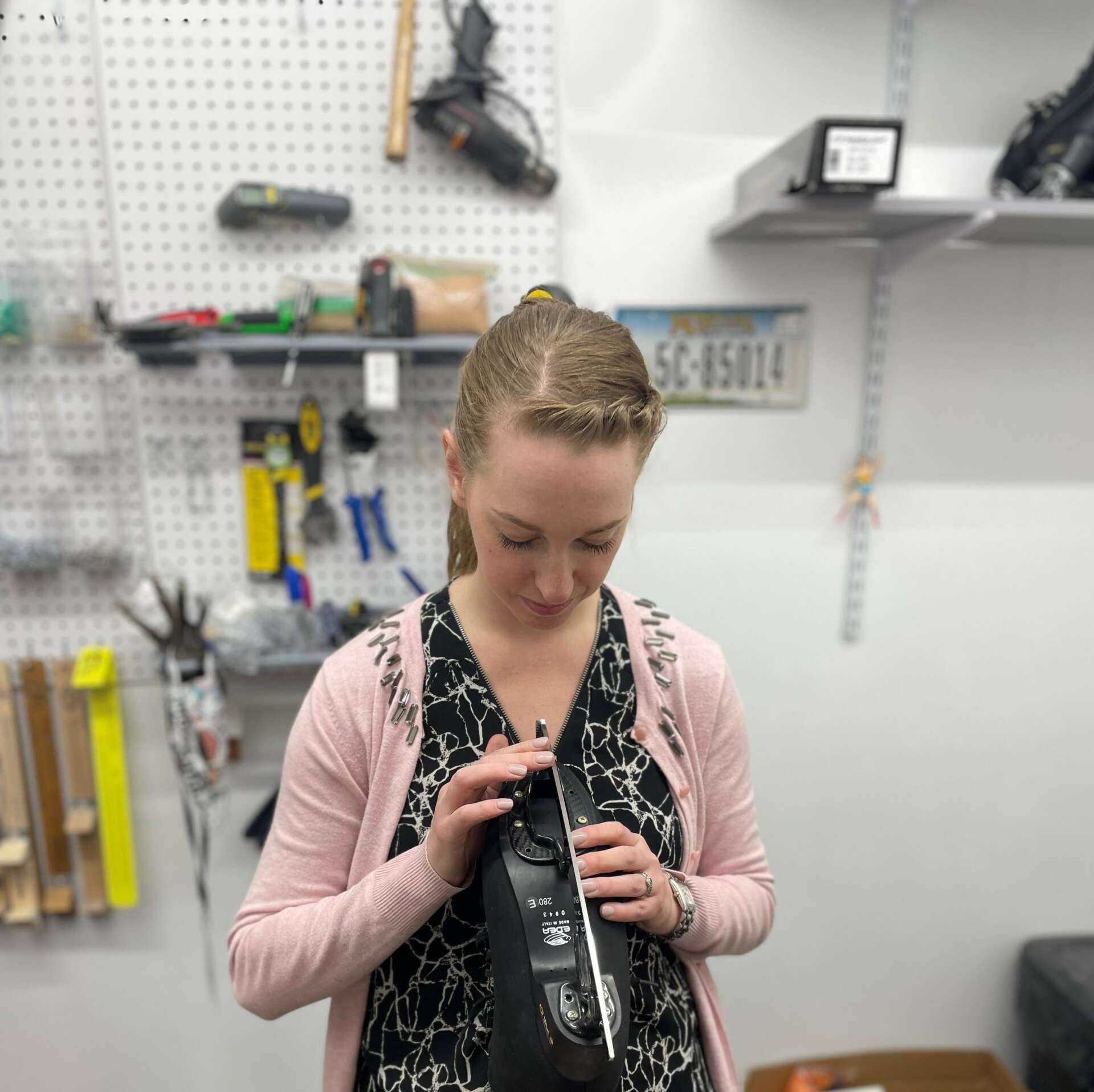
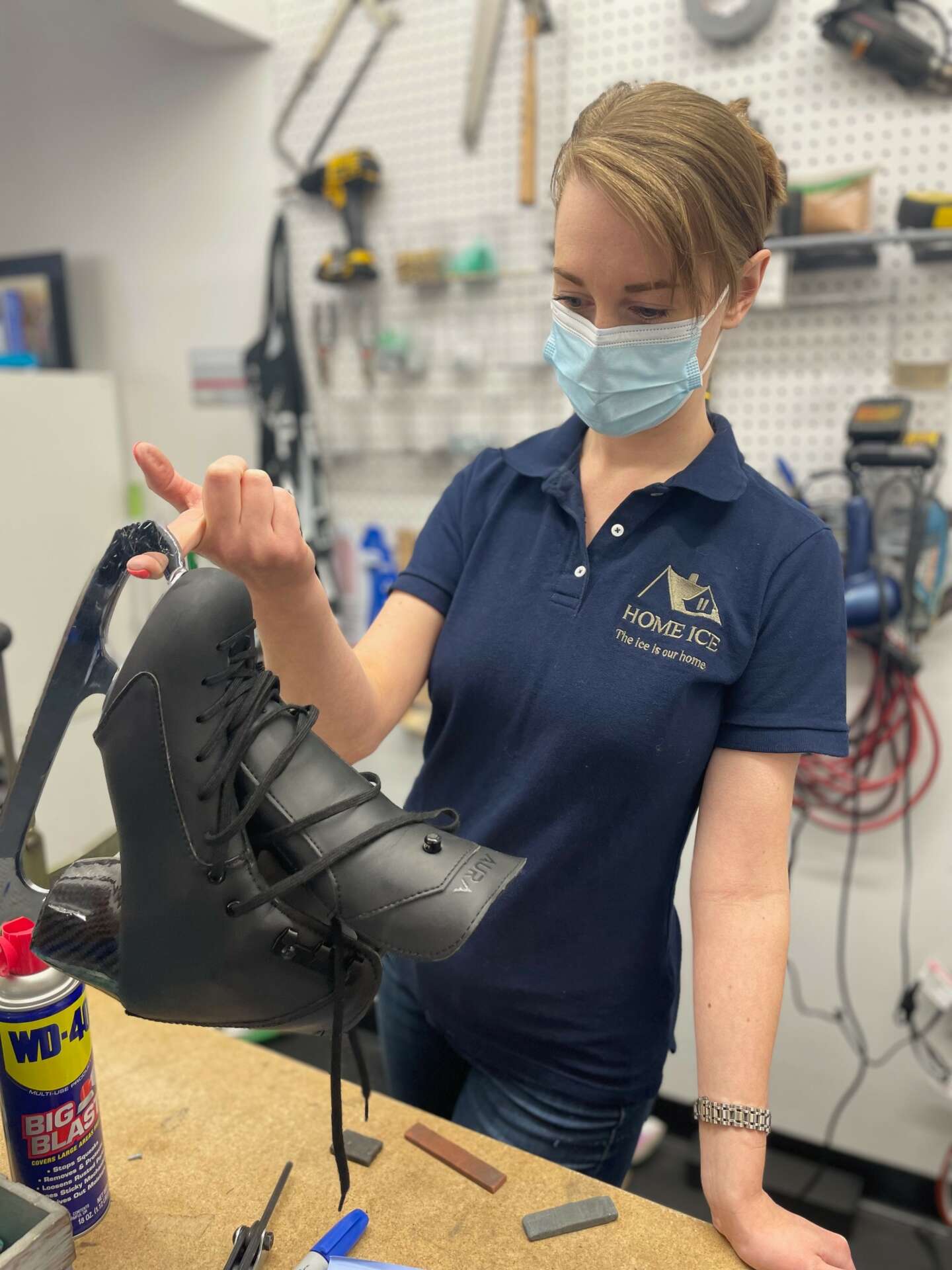
What do you think helped you build your reputation within your market?
I can’t imagine getting involved in a business that I didn’t have a personal passion for. When I first moved to the Boston area, business was slow and nobody knew who I was. I started driving to different ice rinks in the area, not to pass out business cards and try to push products, but just to skate and get to know people.
I wanted to show potential clients that they weren’t just a “demographic” I was targeting. I view figure skaters as a community that I always want to be a part of. I’m not just in this business to make money off of selling products, I’m here to help share my love of this sport and help as many people as possible develop their own relationship with the ice.
Regardless of what you’re selling, I think it’s critical for you to know your market EXTREMELY well and if possible, know it on a personal level. Don’t just look at your customers as customers, look at them as yourself and part of your own community.
We’d love to hear a story of resilience from your journey.
This is one of my favorite stories from when I was first starting out and willing to do anything to make customers happy.
All ice skaters should own something called “hard guards”. I sell them in the shop and they require assembly. It’s very simple, but requires a screw driver. I have at least 5 screw drivers in the shop at any give time, but it was the end of a busy Saturday and for the life of me, I couldn’t find any of them. The customer said not to worry about it and that they would buy them another time but I was desperate to make the sale so I suggested I could have them assembled the next time they skated.
The customer informed me that they skated the next day at a rink in a different town. I responded with “what a coincidence! I live a few blocks from there, I’d be happy to drop them off to you”.
I did not in fact live near by. I lived very far away and didn’t own a car at the time. If you are not familiar with Boston’s public transit system “The T” it looks like somebody through a bowl of multi colored spaghetti on the floor. For those of us who did not grow up in Boston, it’s an absolute labyrinth of tunnels and passageways that I’m pretty sure will take you to Narnia if you do the right series of connections.
It took me over two hours to get to this other rink to deliver a pair of guards. It’s a miracle the customer was still at the rink by the time I got there. The item sold for $15 and costs me $9 at whole sale. It was not a fruitful endeavor.
I know this is not a profound story of overcoming a huge obstacle or emotional milestone, but I think it’s an amusing little cliff note in my career and emblematic of what you have to do at times to develop a positive customer relationship.
Contact Info:
- Website: www.homeiceboston.com
- Instagram: instagram.com/homeiceboston
Image Credits
Brad Vigorito


